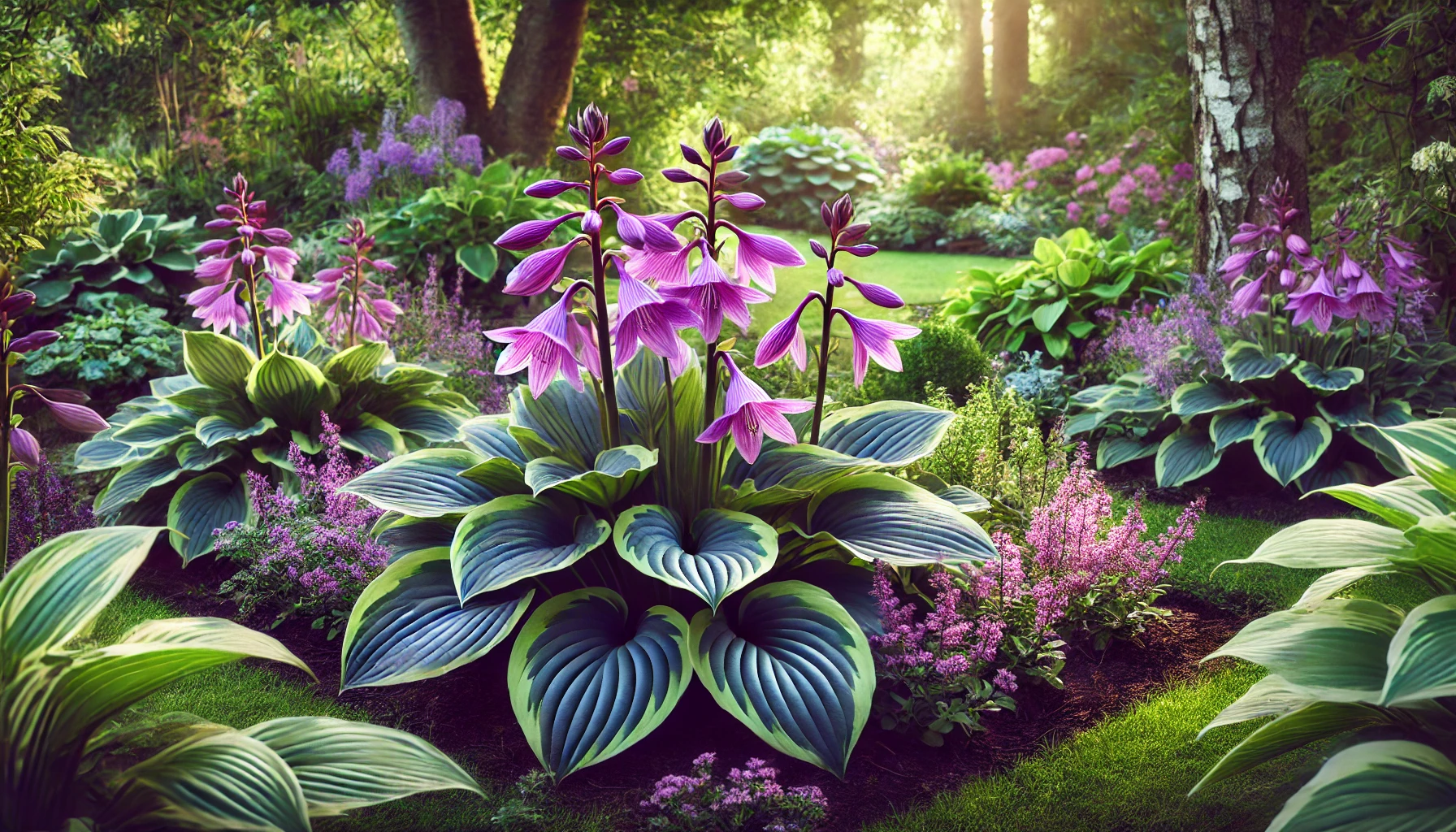Introduction to Purple Hosta
Purple Hosta are a stunning variety of hosta plants known for their unique foliage and vibrant colors. These plants are perfect for gardeners who want to add color, texture, and beauty to their landscapes. In this article, we will explore everything you need to know about purple hostas, including their types, growing conditions, care tips, and benefits.
What Is a Purple Hosta?
A purple hosta is a type of perennial plant that belongs to the Hosta genus. These plants are known for their broad, often heart-shaped leaves and their ability to thrive in shady environments. While most hostas come in shades of green, yellow, and blue, some varieties develop a purple hue, mainly in their flowers or stems.
Popular Varieties of Purple Hosta
Although true purple leaves are rare, some hosta varieties exhibit shades of purple in their stems and flowers. Here are a few notable ones:
- Hosta ‘Purple Heart’ – This variety has deep purple stems with green leaves, adding a striking contrast to gardens.
- Hosta ‘Purple Sensation’ – Known for its lavender-purple flowers that bloom in late summer.
- Hosta ‘Purple Passion’ – A unique variety with bluish-green leaves and purple stems.
- Hosta ‘Red October’ – Features red-to-purple stems and attractive blue-green foliage.
How to Grow Purple Hosta
Purple hostas are easy to grow and require minimal maintenance. Follow these simple steps to cultivate healthy hostas in your garden.
1. Choose the Right Location
Hostas thrive in partial to full shade. However, some varieties can tolerate morning sunlight. Choose a location with well-draining soil and protection from harsh afternoon sun.
2. Prepare the Soil
Purple hostas prefer rich, moist, and slightly acidic to neutral soil. Adding organic matter, such as compost or peat moss, will help improve soil quality and drainage.
3. Planting the Hosta
- Dig a hole twice the size of the plant’s root ball.
- Place the plant in the hole and spread the roots.
- Cover with soil and water thoroughly.
4. Watering Requirements
Hostas need consistent moisture to thrive. Water deeply at least once a week, especially during dry periods. Mulching around the plant helps retain moisture and prevent weeds.
5. Fertilizing for Healthy Growth
Use a balanced, slow-release fertilizer in spring to promote healthy growth. Avoid excessive nitrogen, as it can lead to weak stems.
6. Pruning and Maintenance
- Remove dead or yellowing leaves to keep the plant healthy.
- Trim flower stalks after blooming to encourage new growth.
- Divide hostas every 3-5 years to prevent overcrowding.
Common Pests and Diseases
Purple hostas are relatively pest-resistant but can occasionally be affected by:
- Slugs and Snails – Use organic slug repellents or hand-pick them off the leaves.
- Deer and Rabbits – These animals love hostas. Consider using fencing or repellents.
- Leaf Spot and Fungal Infections – Avoid overhead watering and ensure proper air circulation.
Benefits of Growing Purple Hosta
1. Enhances Garden Aesthetics
Purple hostas add a unique touch of color and texture, making your garden more visually appealing.
2. Low Maintenance
These plants require minimal care and thrive in shady spots where other plants struggle.
3. Attracts Pollinators
Hosta flowers attract bees and hummingbirds, promoting biodiversity in your garden.
4. Improves Soil Health
As hostas grow, their roots help aerate the soil and prevent erosion.
Conclusion
Purple hostas are a fantastic choice for any garden. Their vibrant stems and flowers, combined with their easy-care nature, make them a must-have for both beginner and experienced gardeners. With proper planting and maintenance, these beautiful perennials will bring lasting beauty to your outdoor space for years to come.
